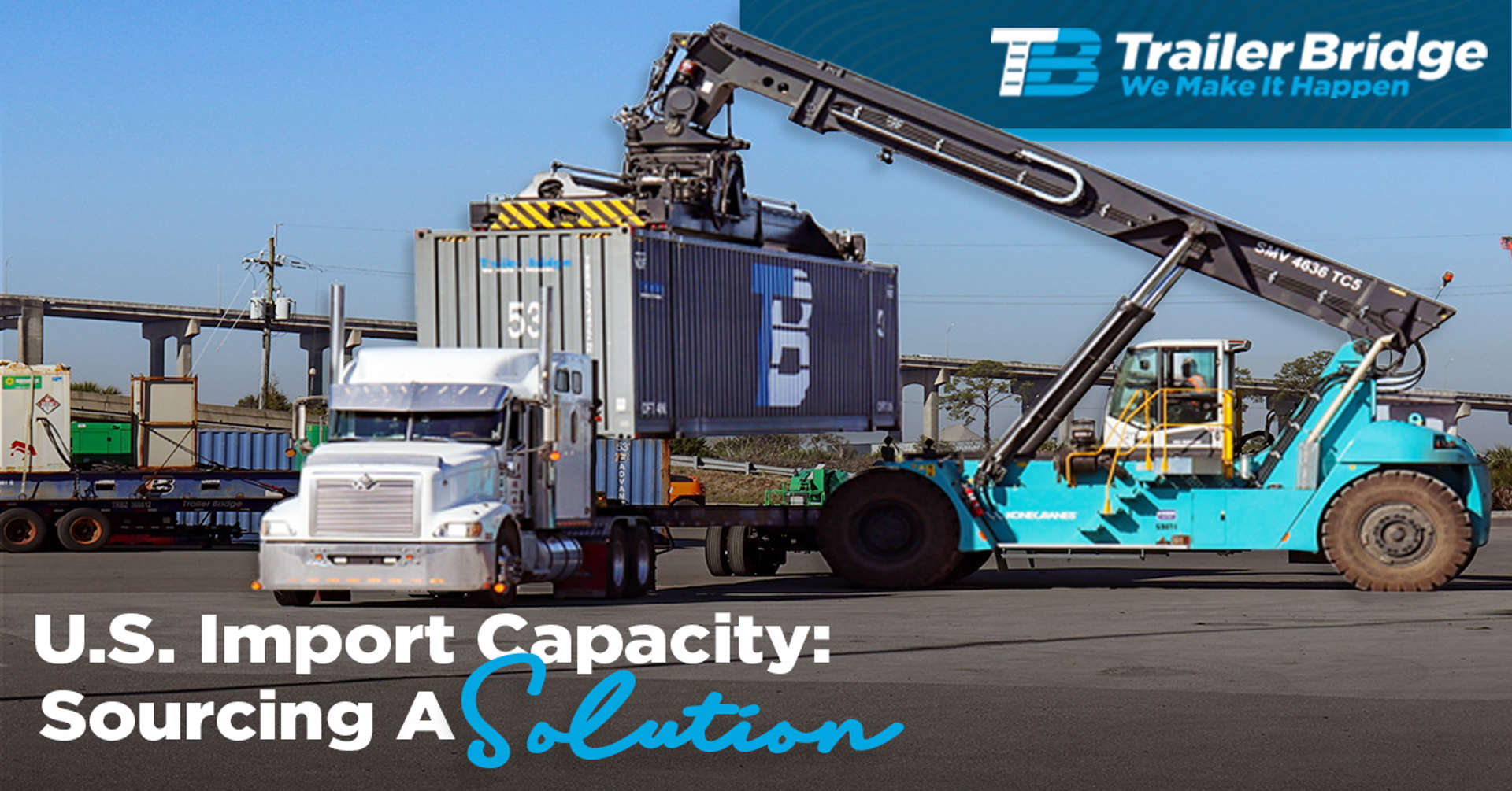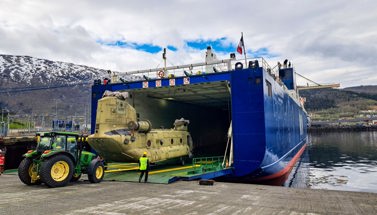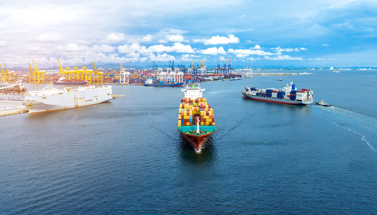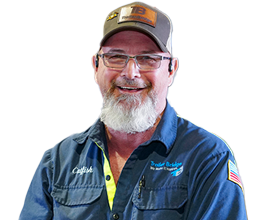
U.S. Import Capacity: Sourcing a Solution in a Congested Market
With freight continuing to build at U.S. ports, drayage rates are 51 percent above what was considered ‘normal’ in 2020. Larger carriers are fully booked with annual import contracts, reducing or eliminating capacity to handle smaller shipments or spot freight.
Directly correlated to consumer spending, the increase in imports is expected to continue throughout 2022. Paired with the driver shortage and lack of equipment to handle the influx of freight, the supply chain will remain stuck in this cycle of backlogs if shippers fail to adapt or innovate. How importers maneuver now will impact their future success.
We sat down with Trailer Bridge’s Chief Commercial Officer Jeff Vaughn to discuss how shippers can better navigate today’s market. His focus lands on partnerships, creativity, and allocation.
Partnerships: Not just another buzz word
Strong partnerships are key to finding freight solutions – a great example is Home Depot’s approach to their supply chain. To circumvent the capacity challenges the company was facing, Home Depot took matters into their own hands and began chartering vessels, sharing space on other vessels while also partnering with UPS. Partnering with UPS was critical because UPS decides what volume to take in and they also provide their customers time slots with the most capacity available. Having this close collaboration allows Home Depot to quickly move volume out of peak periods in its network.
“Visibility within your network can create make or break scenarios,” said Vaughn. “Knowing your supply chain process from A to Z allows shippers to find inefficiencies and correct course as needed.” The home improvement retailer also revitalized its transportation sourcing platforms by going digital through Loadsmart. The technology provided access to instant booking of flatbed capacity and simplified the process for sourcing carriers with available equipment. Having the ability to react swiftly to various scenarios, it allows the shipper to be flexible with potential cost savings and increased efficiencies down the road.
Satish Jindel, principal of SJ Consulting, echoed Jeff’s statement in a SupplyChain247 article, “Shippers should collaborate more closely with both carriers and warehouse managers to strip inefficiencies out of the unloading and loading process.” Can you source a new lane? Is there too much time wasted waiting for a truck to be loaded? Should you partner with multiple carriers to get your goods to market faster? These are all areas that should be visible to the shipper as it contributes to their bottom line.
Get Creative
“If shippers return to their old practices pre-pandemic, the supply chain will never recover. How you innovate and adapt now, is how your cargo stays in motion,” Vaughn said. “Big box retailers are a prime example of this new way of thinking.” Ecommerce has become an essential part of the global retail industry and is projected to continue growing and account for approximately 22% of sales worldwide in 2023 – compared to 14.1% in 2019 (cue the automation and technology implementations for warehouses and distribution centers). To fulfill orders efficiently and rapidly, automation is becoming a real game-changer.
Just this month, Nike announced a ‘Sole Train’ partnership to fast-track their product to distribution centers. The shoe and apparel company secured a dedicated LA to Memphis train to deliver product from the nation’s largest container port to Tennessee facilities additionally involving partnerships with local drayage providers for accelerated offloading. Nike is also increasing distribution center robots to increase speed in order processing, alleviate physical challenges and allow employees to focus their efforts on higher-value tasks.
While technology and automation are playing a huge role in the supply chain’s future, it doesn’t mean it’s the only answer. “Shippers are researching how they can (like Nike) secure a fast lane or a green lane to expedite their goods to market. Getting creative with logistics management results in innovation and adaptability, somewhat paving the way for how logistics will operate in the future,” said Vaughn.
Allocation of Equipment
Having the proper equipment on standby once your cargo lands on the dock not only ensures your cargo does not get held up due to lack of transloading options, but also ensures shippers avoid accessorial charges. Vaughn again points to the importance of supply chain partnerships in stating “Partnering with a logistics provider that can quickly transload ocean freight into equipment for domestic transport can mean all the difference in keeping your costs in line with your budget.”
As port congestion lingers on the West Coast, shippers are shifting their routes and sourcing new ports of entry in sometimes unfamiliar territory. “We have strong partnerships in ports throughout the Gulf, Southeast, and across North America,” said Vaughn. “As an asset-based transportation provider, we have the equipment including secure chassis pools to commit capacity and options for importers with visibility to their cargo throughout its entire journey.” Providing shippers the option of transloading cargo turns vital equipment faster at the port and give shippers flexibility to move cargo expeditiously over-the-road or via Intermodal all while allowing for more turns per day, with the same amount of capacity.
Logistics providers that perform as a one-stop-shop can assist in offsetting supply chain delays and free up containers to reload and the more available empty containers leads to more loads to move.
If we’ve learned anything over the course of the past two years, it’s that things can change at a moment’s notice in this industry. Now more than ever shippers and companies must remain agile and well-positioned to respond to changing conditions bolstered by strong industry partnerships. Rely on Trailer Bridge. We have the people, equipment, and technology in place to ‘Make it Happen’ for your shipping needs. Contact us today for a tailored quote regarding drayage, transloading, or shipping your freight to its final destination.




